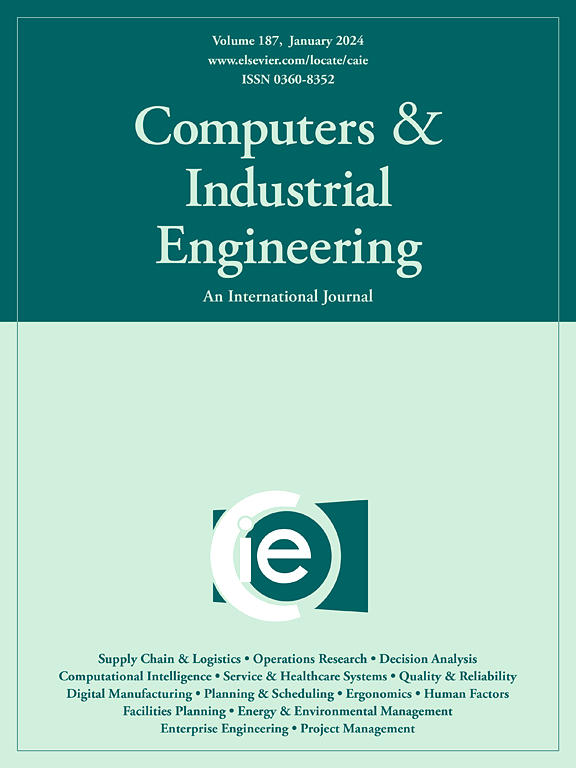三维城市地下物流系统布局优化:一种深度强化学习方法
IF 6.7
1区 工程技术
Q1 COMPUTER SCIENCE, INTERDISCIPLINARY APPLICATIONS
引用次数: 0
摘要
地下物流系统的三维路线设计是决定其地下基础设施布局合理性的关键因素。然而,现有的研究多集中在二维水平方向的线形优化上,而忽略了垂直空间尺度的线形设计,使得研究成果难以有效支持项目实施。此外,传统的运筹学方法难以处理ULS线路详细设计所需的海量地下空间数据处理任务。因此,本研究旨在考虑ULS地下基础设施和物流基础设施的双重属性,提出创新的深度强化学习(DRL)方法来实现三维路线规划。首先,综合考虑地下基础设施布局、成本、空间适宜性、地下空间资源等关键设计因素,建立了地下基础设施布局的DRL模型;其次,针对该问题优化搜索空间大而复杂的特点,提出了基于课程学习的近端策略优化(CL-PPO)算法对该模型进行高效求解;最后,以苏州ULS为例,对不同规划方向下的线路优化结果进行了仿真,验证了模型和算法的有效性。结果表明,与PPO相比,CL-PPO在计算效率和全局优化能力方面具有显著优势。此外,规划方向对ULS线路布局和项目建设成本有显著影响。创新的优化方法不仅丰富了ULS基础设施规划理论,也为城市地下空间的利用提供了空间布局指导。本文章由计算机程序翻译,如有差异,请以英文原文为准。
Optimization of three-dimensional urban underground logistics system alignment: a deep reinforcement learning approach
The three-dimensional (3D) alignment design of the underground logistics system (ULS) is a key factor in determining the rationality of its underground infrastructure layout. However, existing research mostly focuses on the two-dimensional horizontal alignment optimization, while neglecting the alignment design of vertical space scales, which makes it difficult for research results to effectively support projects implementation. Furthermore, traditional operations research methods struggle to handle the massive underground space data processing tasks required for detailed design of ULS alignment. Therefore, this study aims to consider the dual attributes of underground infrastructure and logistics infrastructure of ULS, proposing innovative deep reinforcement learning (DRL) method to achieve 3D alignment planning. Firstly, a DRL model was developed considering the key design factors of underground infrastructure alignment such as construction, cost, space suitability, and underground space resources. Secondly, given the large and complex optimization search space of the problem, a curriculum learning-based proximal policy optimization (CL-PPO) algorithm was proposed to efficiently solve the model. Finally, based on the Suzhou ULS case, simulations of alignment optimization results under different planning orientations were conducted to demonstrate the effectiveness of the model and algorithm. Results show that CL-PPO has significant advantages over PPO in terms of computational efficiency and global optimization capabilities. Additionally, planning orientations have a significant impact on the ULS alignment layout and project construction cost. The innovative optimization method not only enriches the infrastructure planning theory of ULS, but also provides space layout guidance for the utilization of urban underground space.
求助全文
通过发布文献求助,成功后即可免费获取论文全文。
去求助
来源期刊

Computers & Industrial Engineering
工程技术-工程:工业
CiteScore
12.70
自引率
12.70%
发文量
794
审稿时长
10.6 months
期刊介绍:
Computers & Industrial Engineering (CAIE) is dedicated to researchers, educators, and practitioners in industrial engineering and related fields. Pioneering the integration of computers in research, education, and practice, industrial engineering has evolved to make computers and electronic communication integral to its domain. CAIE publishes original contributions focusing on the development of novel computerized methodologies to address industrial engineering problems. It also highlights the applications of these methodologies to issues within the broader industrial engineering and associated communities. The journal actively encourages submissions that push the boundaries of fundamental theories and concepts in industrial engineering techniques.
 求助内容:
求助内容: 应助结果提醒方式:
应助结果提醒方式:


